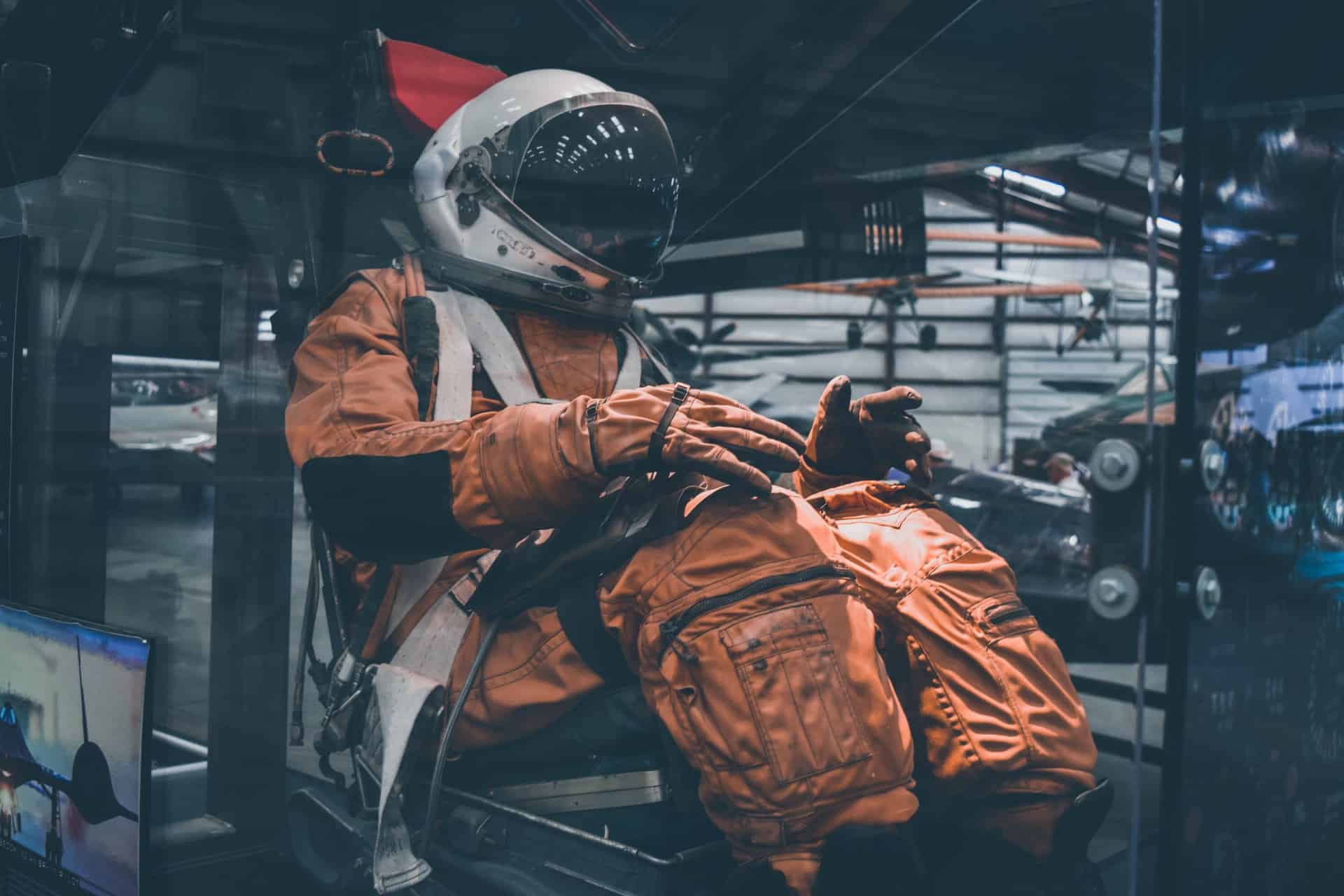With everything happening to our environment, we are more and more intrigued by whether we can live on another planet if we completely destroy Earth. Mars is believed to be the best solution for us, but we still need so much equipment to live there. All astronauts have to wear spacesuits in space, but what would happen if they didn’t wear a spacesuit on Mars?
If you don’t wear a spacesuit on Mars you will die in about 2 minutes. You will be deprived of oxygen and lose consciousness in 15 seconds, and if rescued in the next 2 minutes, you will survive with some consequences. However, if you stay unconscious for longer than 2 minutes, all your organs will stop working and you will die.
There are many things that can kill you on Mars if you don’t wear a spacesuit. Does that mean that it is impossible for us to live on it? Not entirely. While we would need some special and very expensive equipment, we would be able to make Mars habitable. With every research we are closer to finding out how we can make Mars livable for humans.
Do we need spacesuits on Mars?
There is no pressure and oxygen on Mars, the temperatures are very low, and unfiltered UV light is very dangerous to humans. All of this results in death on Mars if you don’t wear a spacesuit.
Simply put, spacesuits are like a small spacecraft that protect astronauts from the hostile environment on Mars. They come in 3 different sizes, small, medium, and large. You can further customize your spacesuit by making a special combination out of those three sizes.
What would happen if you didn’t wear a spacesuit on Mars?
Contrary to the popular belief, you won’t explode on Mars if you’re not wearing your spacesuit. Your skin will keep your organs inside despite the zero pressure on Mars. However, you will inflate. The nitrogen that dissolves in your bloodstream near the surface of your skin will collect itself into little bubbles. These bubbles will expand, which will make you inflate to about double your size. This won’t kill you immediately, but if you don’t do anything about it, the inflated bubbles will cause significant tissue damage.
You also won’t be killed right away by the low temperature, even though a lot of people think that you will get hypothermia. The reason why you can get hypothermia very fast from lukewarm water isn’t the waters’ temperature, it’s because water is good at conducting and convecting heat away from you and it sucks away any heat your body’s metabolism produces. However, in vacuum, there’s no convection and no conduction.
This leaves us with radiation. It is known that every human glows, in the infrared spectrum, from radiating heat at about 100 watts. On Earth, we don’t notice all the lost energy, because we are covered by an insulating layer of air, and warmed by the sun above our heads and the ground beneath our feet. That means that our thermal output is more than matched by the thermal input of our environment. We can radiate all day long without any consequences. However, there’s nothing to insulate you in space, which means that we would end up freezing to death.
What will kill you the fastest, is the lack of oxygen on Mars. Your blood will still keep circulating because it doesn’t know that there’s no oxygen. Your heart will keep beating, and sending oxygen-deprived blood wherever it’s supposed to go.
Deprived of oxygen, your brain will shut down to save energy. It will take you about 15 seconds outside of your spacesuit to lose consciousness. If someone pulls you back in the airlock within the first two minutes you will survive, but suffer some consequences like ebullism, flash-frozen skin, and sunburn from all that raw unfiltered UV radiation.
If you’re left outside more than two minutes, all your organs will shut down and you will die.
If you were to try to hold a breath in, you would end up with the same thing that scuba divers do if they ascend too quickly from deep waters and that is ruptured lungs. Your lungs and throat aren’t supposed to hold atmospheric-pressure air against a pure vacuum.
What happens after you die in space and no one finds you? On Earth, people decompose, but on Mars, things go a bit differently. The bacteria that can be found in your gut will start to eat you on the inside. However, the decomposing process is much slower than it is on Earth, which is why you could be floating for millions of years without any change to your body.
Could a human survive on Mars?
Humans can survive on Mars, but not very easily, and not without any equipment.
In order for humans to live on Mars, we have to first find a way to go there. To reach the 35-million-mile journey to Mars, we would need some serious technology.
Once we get there, we need self-sustaining water, food and oxygen to survive. We would probably have to extract water locked up in ice. NASA is in the process of developing an excavator device called RASSOR (Regolith Advanced Surface Systems Operations Robot), which is supposed to mine water, ice and fuel from planetary soil.
We will also need to farm and harvest food, but that’s not exactly easy in space. All plants grown in space require the management of gasses, water and a growing substrate. We will need special growing systems, for example, VEGGIE (the Vegetable Production System project), a microwave-sized chamber in which plants receive carbon dioxide and controlled-release fertiliser, and fans stir the air.
Our bodies function differently in space than they do on Earth, where gravity drags bodily fluids downwards. That means that our heart has to work harder to pump out more blood and more fluids accumulate in the head, putting extra pressure on the eyes.
Another important aspect of living on Mars is diet, which is being researched right now. We would need foods that protect bone health and are rich in antioxidants to boost immunity.
The isolation, confinement and loss of privacy associated with long-duration space travel tend to cause mental-health problems such as depression.
How could a human survive on Mars?
According to a new study, there is a way for us to make Mars habitable. In 2019, researchers from Harvard University, NASA’s Jet Propulsion Lab, and the University of Edinburgh published their results which gave an answer to whether there was an earthly material that we could bring to Mars that would mimic Earth’s atmosphere. Even though Mars is the most habitable planet in our Solar System besides Earth, it still remains a hostile environment for many kinds of life. However, by creating small islands of habitability, we would be able to transform Mars in a controlled and scalable way.
Researchers tried to find a way to create a greenhouse effect which would make Mars more like Earth. They researched what kind of materials could minimize thermal conductivity but still transmit as much light as possible, and one such material is silica aerogel.
Silica aerogel is believed to be one of the most insulating materials ever created. It is extremely porous, which means that light can move through it, but it still blocks harmful ultraviolet radiation. In theory, it could transmit enough light to enable photosynthesis while permanently raising temperatures above water’s melting point. It would be able to do all this without any internal heat source. It doesn’t require large amounts of energy or maintenance of moving parts to keep an area warm over long periods of time. Researchers found that even a thin layer of silica aerogel mimicked Earth’s atmosphere.
If they were to spread it around a large enough area of Mars, any other technology or physics wouldn’t be needed.
This isn’t the first such research. In 1971, Carl Sagan proposed the idea of terraforming, which means making the planet resemble Earth in order to make it habitable for human life. In 2018, two NASA-funded researchers from the University of Colorado, Boulder and Northern Arizona University discovered that working with Mars’ existing water and greenhouse gases probably wouldn’t be able to create a liveable atmosphere for humans.
What’s different about this study is that it took a different approach. It is much more achievable than global atmospheric modification.

